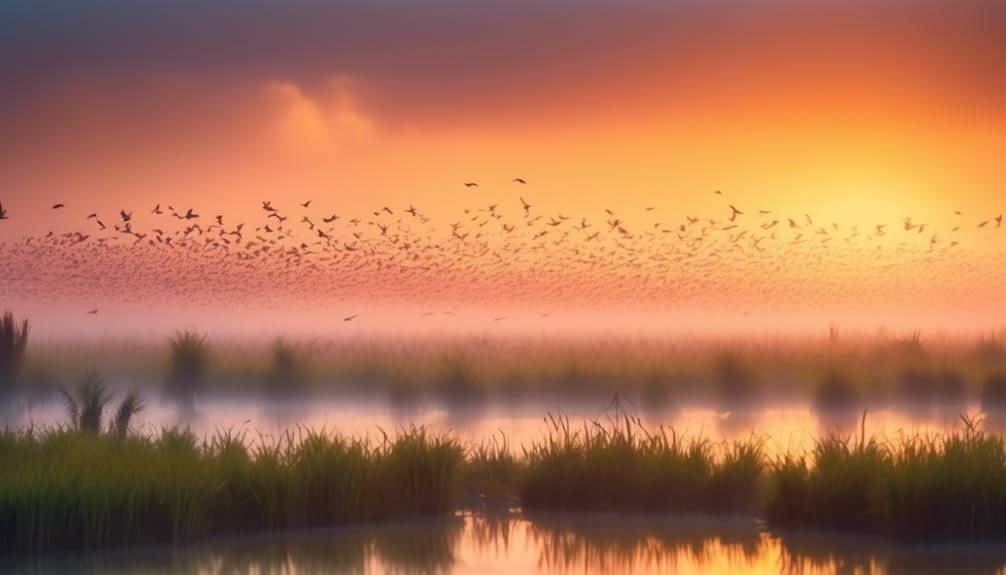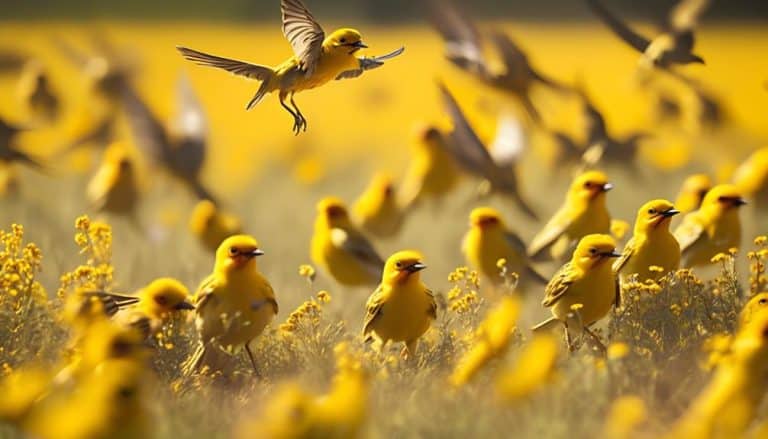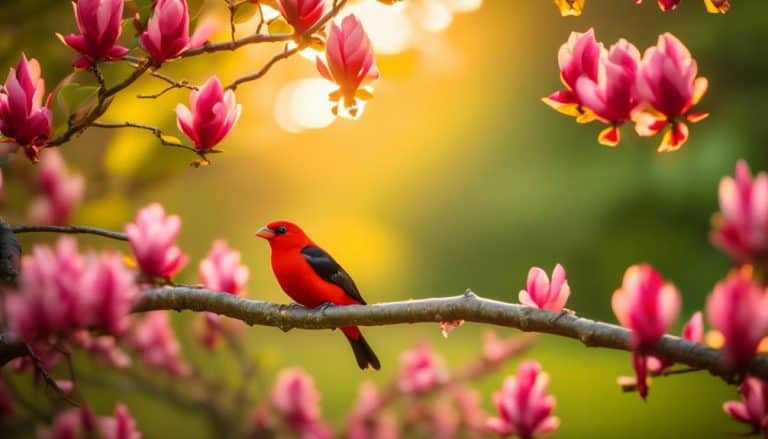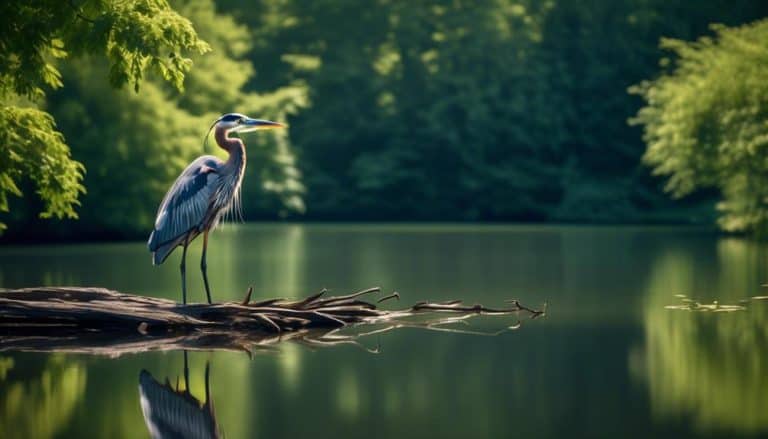In the world of birding, there is a delicate balance between patience and timing. It's the art of being in the right place at the right time, ready to witness the wonders of nature unfold before your eyes.
As the sun rises and the world awakens, or as the day draws to a close and the shadows grow long, there is a particular magic that fills the air. But when is the best time to experience this enchantment?
Well, my friend, the answer lies in the following paragraphs, where we will explore the different seasons and moments that hold the key to unlocking the secrets of birding.
So, prepare yourself for a journey through the cycles of nature, where each time of day and each season offers its own unique treasures waiting to be discovered.
Early Morning: The Magic Hour for Birding

Why is the early morning considered the magic hour for birding?
As an avid birdwatcher, I've come to appreciate the unique allure of the early morning when it comes to observing our feathered friends. During this time, the atmosphere is still and serene, creating the perfect conditions for birding. The first rays of sunlight gently pierce through the morning mist, casting a soft glow over the landscape. It's in this peaceful ambiance that the avian world comes alive.
One of the main reasons why the early morning is so enchanting for birding is the abundance of bird songs. As the sun begins to rise, the air is filled with a symphony of melodious tunes. Each species has its distinct song, and listening carefully, one can identify the diverse array of birds present in the area. These early morning bird songs not only serve as a means of communication but also mark the beginning of the day for our feathered friends.
Additionally, the early morning is when birding hotspots truly come alive. These areas, whether it be a lush forest or a tranquil wetland, are teeming with activity in the morning hours. Birds can be seen foraging for food, engaging in courtship displays, or simply perching on branches, basking in the warmth of the rising sun. The morning mist adds an ethereal touch, creating a mystical atmosphere that enhances the overall birding experience.
Late Afternoon: When Birds Get Active Again
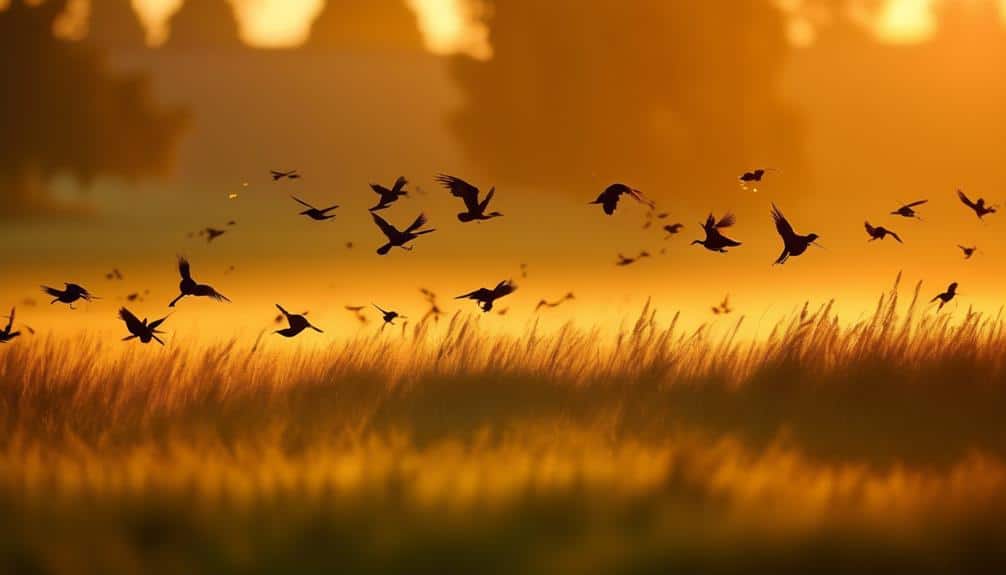
As the sun starts to descend in the sky, the late afternoon brings about a resurgence of activity among the avian inhabitants, marking a shift in the birding landscape. During this time, bird behavior undergoes noticeable changes, making it an optimal timing for birdwatching. Here are four key observations to consider:
- Increased vocalization: As the day cools down, birds become more active and vocal. Their melodic songs and calls fill the air, creating a symphony of sounds. This heightened vocalization serves multiple purposes such as territorial defense, attracting mates, and communication within their social groups.
- Feeding frenzy: Late afternoon is a prime time for birds to search for food. They take advantage of the remaining daylight to forage and replenish their energy reserves. Trees and bushes become bustling feeding stations as birds dart among branches and foliage in pursuit of insects, seeds, and fruits.
- Social interactions: Many bird species engage in social activities during the late afternoon. Flocks can be seen flying together, perching in groups, or engaging in playful behaviors. These interactions strengthen social bonds, facilitate information sharing, and provide protection against predators.
- Last-minute nesting: Some bird species, particularly those with diurnal habits, use the late afternoon to complete their nesting activities. They gather materials, build nests, and make final adjustments before settling in for the night. Observing these nesting behaviors can offer valuable insights into their reproductive biology and habitat preferences.
Spring Migration: Witness the Spectacle of Bird Movement
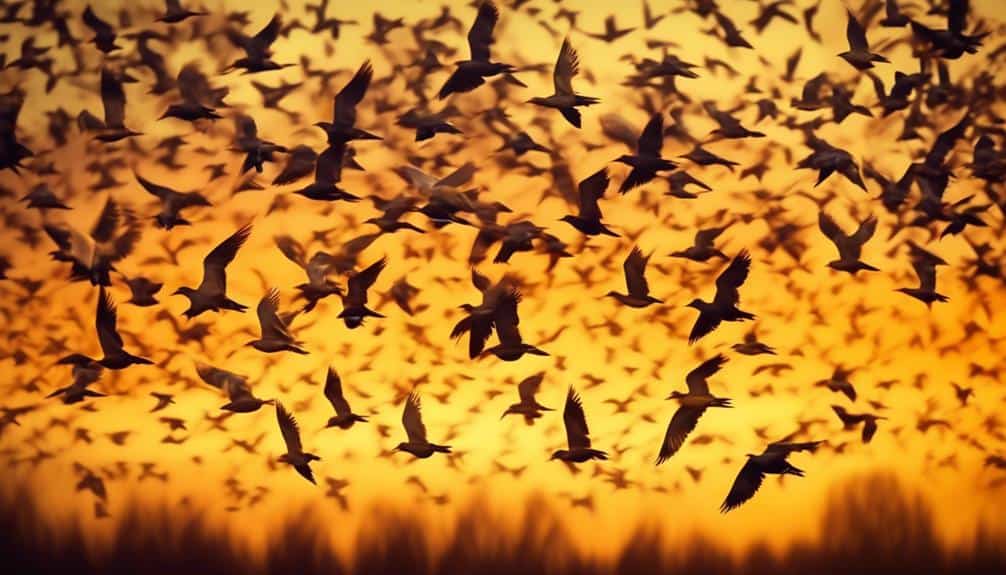
I eagerly anticipate the arrival of spring each year, for it brings with it the awe-inspiring spectacle of bird migration. As the days grow longer and the temperatures rise, birds from all over the world embark on their annual journey to breeding grounds. Witnessing this incredible movement is a treat for any bird enthusiast.
Spring migration is a critical time for birders, as it offers a unique opportunity for bird identification. During this period, a wide variety of species can be seen passing through birding hotspots. These locations, such as coastal areas, wetlands, and mountain ranges, serve as important stopover points where birds rest and refuel.
To make the most of spring migration, birders must be well-prepared. It's crucial to familiarize oneself with the different species likely to be encountered. Field guides, birding apps, and online resources are valuable tools for identifying birds based on their plumage, behavior, and calls.
When visiting birding hotspots, it's important to arrive early in the morning. This is when birds are most active and vocal, making them easier to spot and identify. Patience and keen observation skills are essential, as some species may only pass through for a brief period.
Spring migration is a remarkable phenomenon that showcases the beauty and diversity of avian life. By visiting birding hotspots and honing our bird identification skills, we can fully appreciate the wonder of this natural spectacle.
Breeding Season: A Time for Nesting and Courtship Displays

During the breeding season, birds engage in intricate courtship displays to attract mates and establish nesting territories. This is a crucial time for their survival and continuation of their species. Observing their nesting behavior and mating rituals during this period provides valuable insights into their reproductive strategies.
- Nesting Behavior: Birds exhibit a wide range of nesting behaviors, from building elaborate nests to using existing cavities or crevices. Some species construct intricate nests using a variety of materials such as twigs, leaves, grass, and even feathers. Others, like the burrow-nesting seabirds, dig burrows in the ground or use cliffs as nesting sites. Understanding their nesting behavior helps us understand their habitat requirements and conservation needs.
- Mating Rituals: Courtship displays play a crucial role in attracting mates. Male birds often engage in elaborate displays of plumage, songs, dances, and aerial acrobatics to impress females. These rituals not only showcase their physical fitness but also their ability to provide for and protect their potential offspring. By observing these mating rituals, researchers can gain insights into the evolution of these behaviors and the selection pressures that shape them.
- Territory Establishment: During the breeding season, birds fiercely defend their nesting territories. They use vocalizations, displays, and aggressive behavior to establish their boundaries and ward off intruders. By studying these territorial behaviors, scientists can better understand the social dynamics within bird populations and the role of competition in their reproductive success.
- Parental Care: Once the mating and nesting are successful, birds demonstrate remarkable parental care. Both parents participate in incubating the eggs, feeding the hatchlings, and protecting the nest from predators. Understanding their parental care strategies provides valuable insights into their reproductive success and the survival of their offspring.
Fall Migration: Catch the Stunning Sight of Birds on the Move

Observing the intricate courtship displays and nesting behaviors of birds during the breeding season provides valuable insights into their reproductive strategies; however, as summer transitions to autumn, a new spectacle unfolds as birds embark on their remarkable fall migration, offering a stunning sight of birds on the move.
During fall migration, the landscape transforms into a vibrant canvas of colors as trees shed their green hues and don a breathtaking array of reds, oranges, and yellows. This natural spectacle serves as the backdrop for an awe-inspiring sight: the migration of birds. As the days grow shorter and the temperatures drop, birds prepare for their long journey to warmer climates. They gather in large flocks, creating a mesmerizing display as they navigate the skies with precision and grace.
To catch this stunning sight, birders flock to renowned birding hotspots where fall migration is at its peak. These locations offer prime opportunities to witness the spectacle up close. Whether it's the marshes and wetlands teeming with waterfowl or the forests alive with songbirds, each hotspot has its unique offerings. Birders armed with binoculars and field guides eagerly await the arrival of migrating species, hoping to tick off rare sightings from their birding checklist.
Fall migration isn't only a visual treat but also a scientific marvel. It's a testament to the incredible navigational abilities and instinctual behaviors of birds. As they traverse vast distances, battling the elements and overcoming obstacles, these feathered travelers inspire awe and wonder.
Winter: Uncover the Hidden Gems of Cold-Weather Birding
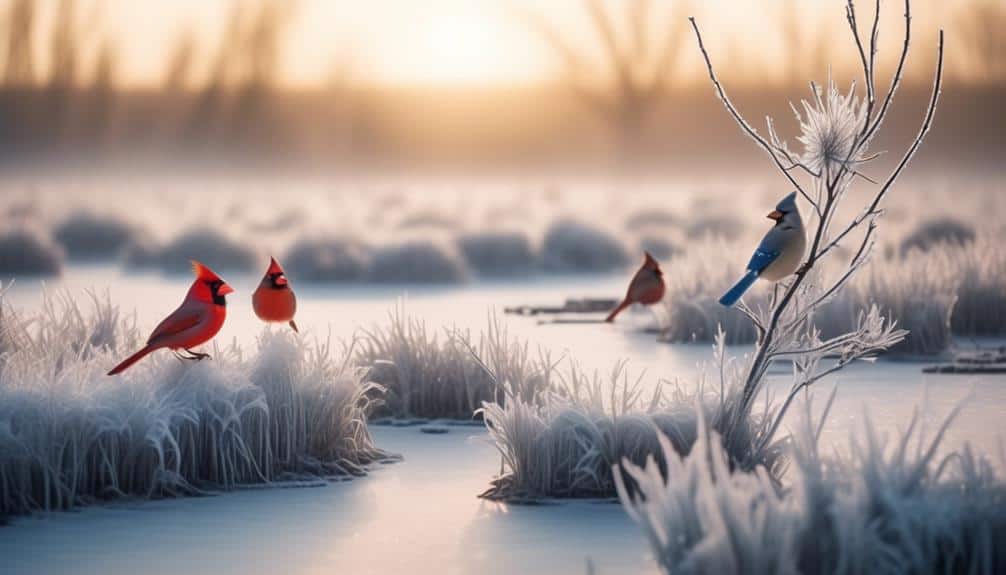
Winter brings with it a multitude of hidden gems for birders willing to brave the cold weather and venture out into the natural world. While many people associate birdwatching with the warmer months, winter birdwatching offers a unique and rewarding experience. Here are four reasons why winter is the perfect time to uncover the hidden gems of cold-weather birding:
- Winter Bird Species: During the winter months, many bird species migrate to more temperate regions, making it an ideal time to spot rare and unique species. From the majestic snowy owl to the charismatic black-capped chickadee, winter brings a diverse array of bird species to observe and appreciate.
- Lack of Foliage: With the trees stripped of their leaves, winter provides unobstructed views of the birds. This makes it easier to spot and identify different species, even from a distance. The absence of foliage also allows for better photography opportunities, capturing the beauty of these winter visitors.
- Feeding Behavior: In the colder months, food sources become scarce, leading to increased bird activity around feeders and other food sources. This presents birders with the opportunity to observe unique feeding behaviors and interactions between different species, providing valuable insights into their ecology.
- Quiet and Peaceful: Winter birdwatching offers a tranquil and serene experience. With fewer people venturing out during this time, the natural world becomes a quiet sanctuary. The peacefulness of the winter landscape enhances the overall birding experience, allowing for a deeper connection with nature.
Frequently Asked Questions
What Are Some Tips for Beginners Who Want to Start Birding?
As a beginner, I found some useful tips for birding. Firstly, research and find birding hotspots in your area. Secondly, invest in the right binoculars for birding, ensuring they have good magnification and clarity.
Are There Any Specific Bird Species That Are More Active During the Late Afternoon?
During the late afternoon, certain bird species tend to be more active. Observing bird behavior in the evening can provide valuable insights into their feeding patterns, social interactions, and overall daily routines.
How Can I Attract Birds to My Backyard During the Breeding Season?
To attract birds to my backyard during the breeding season, I created a bird-friendly habitat by planting native plants, installing bird feeders and water sources, and providing nesting boxes. This increased bird activity and brought a variety of species to my yard.
What Are Some Key Differences Between Spring and Fall Migration?
When comparing spring and fall migration, differences become apparent. In spring, birds are returning from their wintering grounds, while in fall they are heading south. These contrasting movements result in distinct timing and species compositions.
Are There Any Specific Winter Bird Species That Are Particularly Interesting to Observe?
Winter birdwatching is a fascinating experience. Unique bird species like the snowy owl and the cedar waxwing can be observed. Their graceful flight and striking plumage make them a sight to behold, like colorful jewels dancing in the cold air.
Conclusion
In conclusion, the best time to go birding is when the world is waking up, and the sun is painting the sky with hues of gold. It's during the early morning, the magic hour, that birds come alive with their melodious songs and graceful flights.
As the day progresses, another opportunity arises in the late afternoon, when birds become active once again. From witnessing the breathtaking spectacle of spring migration to the hidden gems of winter birding, each season holds its own captivating charm.
So, grab your binoculars and immerse yourself in the wonders of nature's aviary. As the saying goes, 'In the quiet of the morning, the birds reveal their secrets, offering a symphony for those who listen.'

